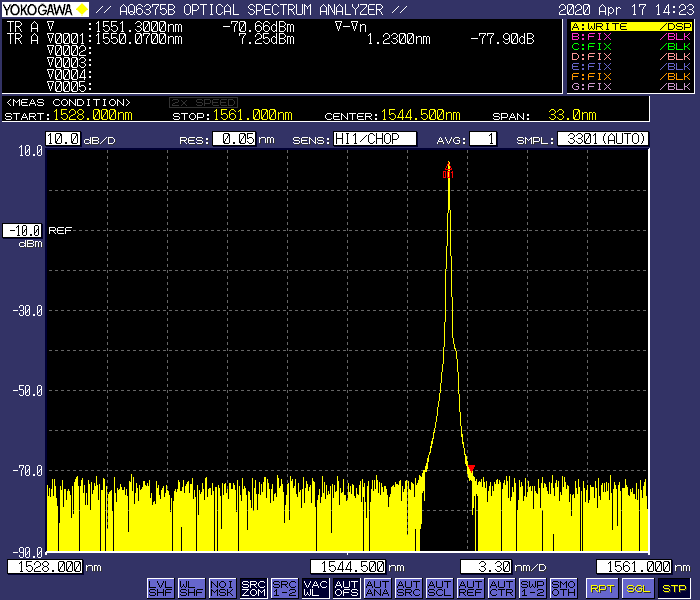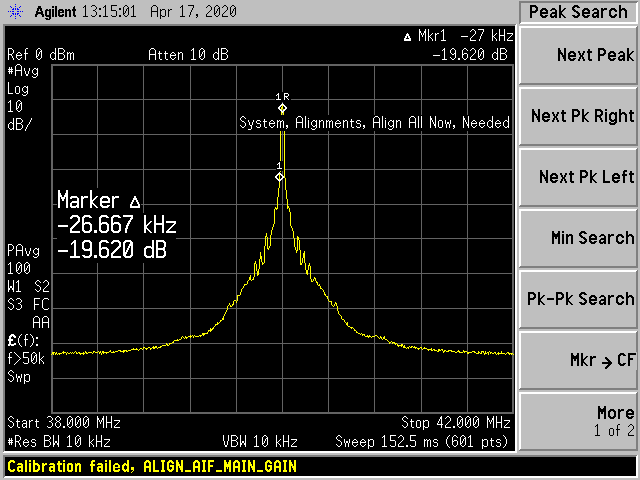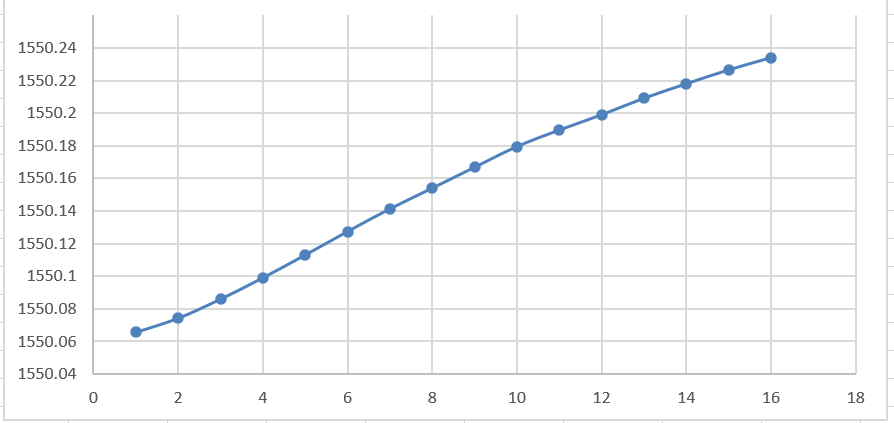
Connet has core patented technology in the field of low-noise ultra-narrow linewidth single frequency fiber lasers. Connet is the only company in this field that can independently develop kHz-level 'Optimized Traveling Wave Cavity' and 'Distributed Feedback Bragg Grating (DFB)' single frequency fiber lasers with independent intellectual property rights. The two types of single frequency fiber lasers have their own characteristics to meet the needs of the professional fields such as high-precision fiber optic sensing, coherent communication, LiDAR, and the basic scientific researches, etc.
CoSF-D series narrow linewidth single frequency fiber laser of Connet is a low-noise fiber laser independently developed by patented technology. It adopts the Distributed Feedback Bragg Grating (DFB) type fiber laser technology and has independent intellectual property to achieve the stable linear polarization, single longitudinal mode and ultra-narrow linewidth single-frequency laser output. CoSF-D narrow linewidth single frequency fiber laser basic module has excellent performance with the output spectrum linewidth in kHz level with the ultra-low phase noise and intensity noise. CoSF-D narrow linewidth single frequency fiber laser basic module is compact and robust with strong environmental interference capability.
With the core technology of DFB-type phase shift grating production as well as years of in-depth research and development, Connet now can provide the 'Distributed Feedback Bragg Grating (DFB)' single frequency fiber lasers with almost any wavelength in the bands of 1.0um, 1.5um and 2.0um. For the applications of the 1.5um band, Connet divides the lasers into two categories according to the adopted fibers in CoSF-D-ER-M and CoSF-D-EY-M:
The standard operating wavelength of 1.5um band CoSF-D single frequency fiber laser is 1550.12nm with the wavelength being optional in the range of 1530-1570nm, such as the standard wavelengths in the ITU framework.
Standard CoSF-D-ER-M module is compact and robust with the wide operating temperature range, the wavelength thermal tuning range up to 1nm, and the optional PZT fast wavelength tuning function up to 15GHz.
COSF-D-ER-M - Specifications:
|
Parameter |
Test Result |
|
Power Supply |
+12VDC |
|
Operating Temperature |
-5℃~+50℃ |
|
Storage Temperature |
-40℃~+85℃ |
|
Humidity |
≤90% |
|
Operating Wavelength |
1550.12nm |
|
Output Power |
5mW |
|
Linewidth |
<1kHz |
|
Output Extinction Ratio |
>20dB |
|
Frequency Drift |
~1pm |
|
Output Power Stability (1h) |
<1% |
|
Output Fiber Type |
PM1550-XP |
|
Dimension |
145x100x25mm |
CoSF-D-ER-M - Spectrum:

Fig. 1 Output Spectrum with excellent SMSR 77.9dB
CoSF-D-ER-M - Linewidth (Self-Heterodyne Non-balanced M-Z Interferometer):

Fig. 2
* The linewidth is tested under the natural laboratory conditions with the non-balanced M-Z interferometer and the CoSF-D-ER-M having no isolation treatment on sound, heat and light.
* The adopted delay fiber length is 50km with the integration time of 240us.
* The measured linewidth is about 2.66kHz. The actual linewidth of the single frequency fiber laser should be <1kHz for the applied test method and environment.
CoSF-D-ER-M - Relative Intensity Noise (RIN):

Fig. 3
*RIN Peak Frequency: ~350kHz
*Peak RIN: <-115dBc/Hz
*Low-frequency RIN (<300kHz): <-120dBc/Hz
*High-frequency RIN (>3MHz): -140dBc/Hz
CoSF-D-ER-M - Output Power Stability (1h):

Fig. 4
CoSF-D-ER-M - PZT Tuning (Optional):

Fig. 5
CoSF-D-ER-M - Phase Noise:

Fig. 6
* The spectral purity, relative intensity noise (RIN) and phase noise of CoSF-D-ER-M are significantly better than some similar products on the market by comparison. The comprehensive noise level of CoSF-D-ER-M is quite low.
* The output power of CoSF-D-ER-M basic module is optional from 5mW to 100mW.